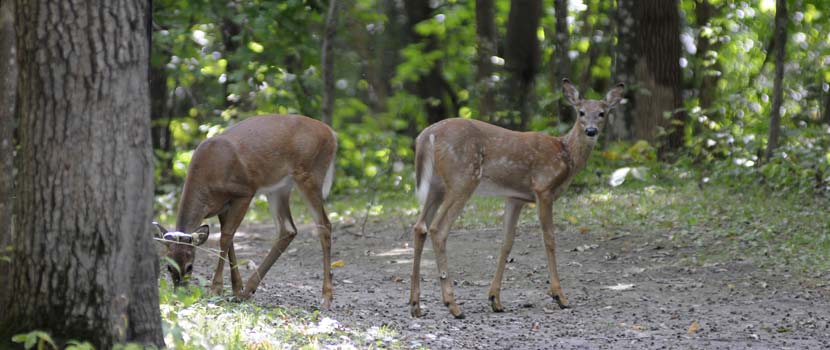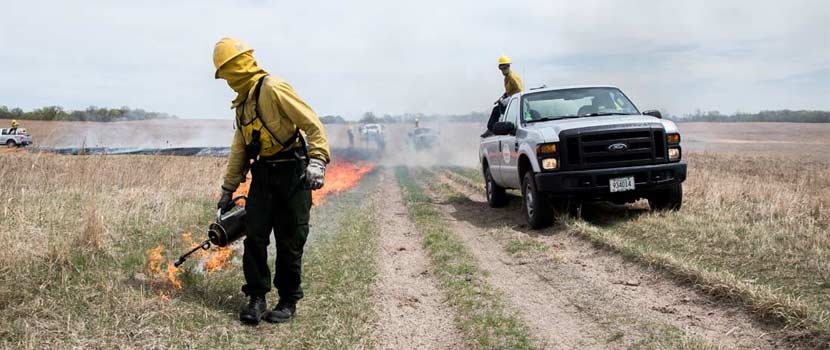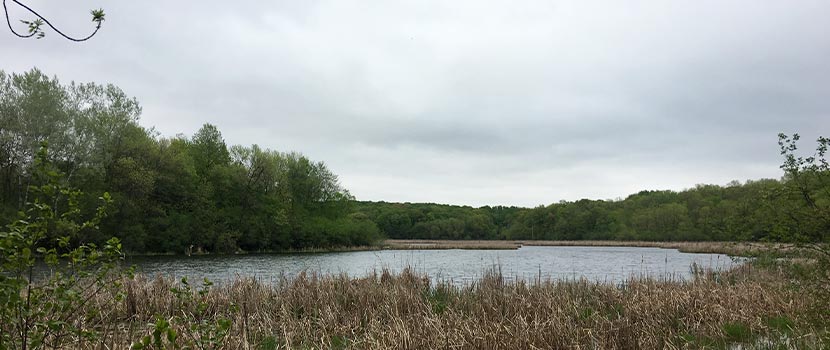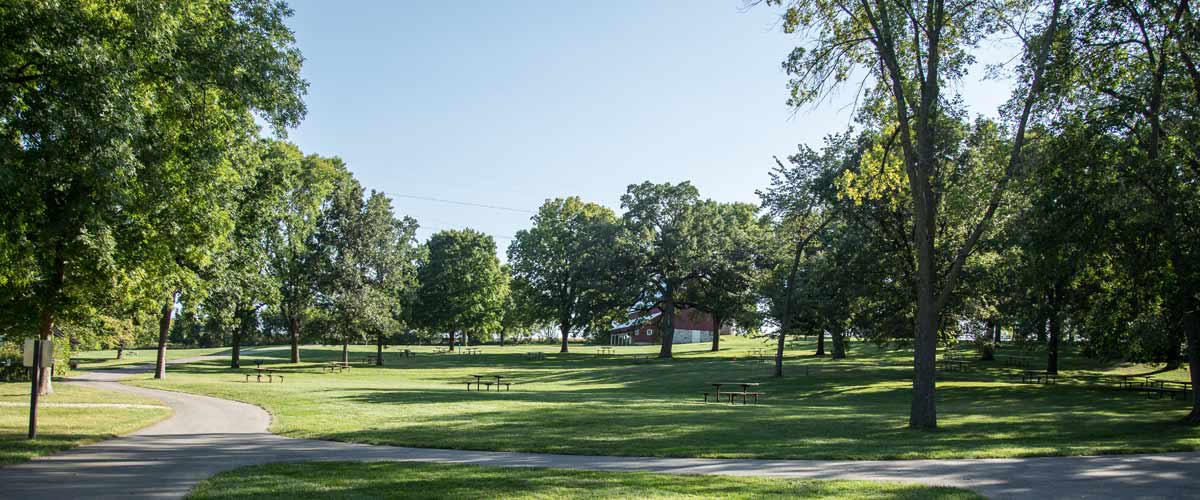
Why and How We Prune Trees at Three Rivers
By: Dan Comerford
January 04, 2021
Category: Resource Management
When many people hear the word “pruning,” they immediately think of roses or ornamental shrubs. But trees often require pruning too. Pruning is the selective removal of portions of a plant, and it usually refers to the removal of twigs and branches – but roots, flowers and buds are also pruned from trees.
At Three Rivers, we have a tree pruning program to ensure that the trees we manage are safe, healthy and able to provide shade and beauty for years to come.
Tree Pruning: Then and Now
Traditionally, cutting branches from trees was known as “trimming,” and the people who did this hard and dangerous work were known as tree trimmers or sometimes tree surgeons. The equipment and techniques were rudimentary, and the sheer technical challenge of safely cutting branches high in the air was the primary concern, with attention to detail and pruning theory of lesser importance.
As the specific skills and techniques used have improved over the years, the management of individual trees has become known as arboriculture, and practitioners as arborists. Currently, multiple Three Rivers Forestry employees are ISA Certified Arborists, an industry certification that demonstrates extensive experience and knowledge in all areas of arboriculture.
Pruning for People
It is important to recognize that for the most part, pruning is for people, not trees. Trillions of trees in forests across the earth get by just fine without human assistance. It is only when we desire to coexist with trees around our homes, communities and parks that we prune to accommodate human needs.
Here at the Three Rivers, we focus on pruning the trees in and around the areas most used by the public. The main objectives of our tree pruning program are to reduce risk of damage to people or property, provide clearance for people and vehicles and improve tree structure for strength and aesthetics. We use a proactive approach of early and frequent pruning rather than only cutting limbs from a tree when it becomes too large or damaged.
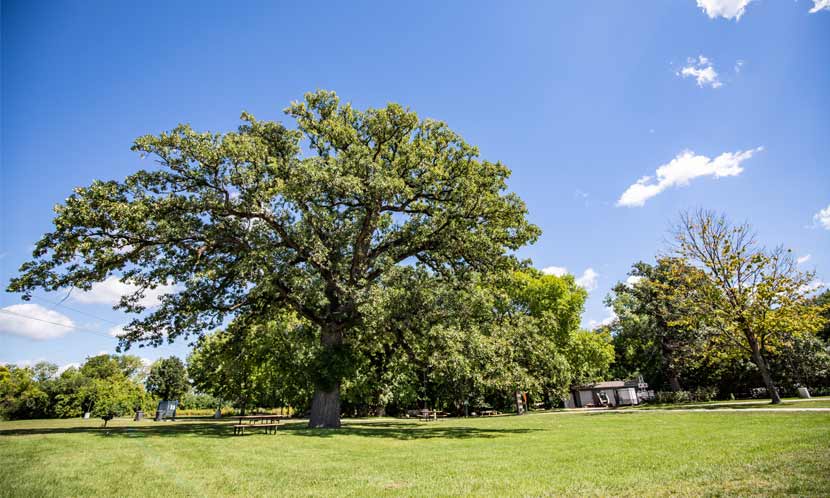
Pruned for a Lifetime
Our trees are pruned from their very first years! The Three Rivers Nursery propagates a wide variety of native trees from seed and grows them until they are ready to be transplanted into the landscape.
Frequent pruning with hand pruners at the nursery develops a strong central leader (vertical branch at the top of the trunk) and properly sized and placed young branches. This is known as structural pruning. By the time our trees are ready to be transplanted into the parks over a decade later, they have already been pruned many times and are well on their way to becoming our future shade trees.
Once transplanted into our picnic grounds and around our buildings, the tender loving care continues. Structural pruning continues for 10 to 20 years until the trees approach maturity.
Tree pruning is one of the main winter activities for Three Rivers Forestry staff. All trees in picnic grounds, campgrounds and around buildings are visited for pruning every five to seven years. Three Rivers arborists assess each tree, and then prune it if it is necessary.
Often pruning takes place high in a tree. Our staff are trained tree climbers and use ropes and harnesses to enter the tree canopies and perform the required pruning. Yes, we get to climb trees on the job!
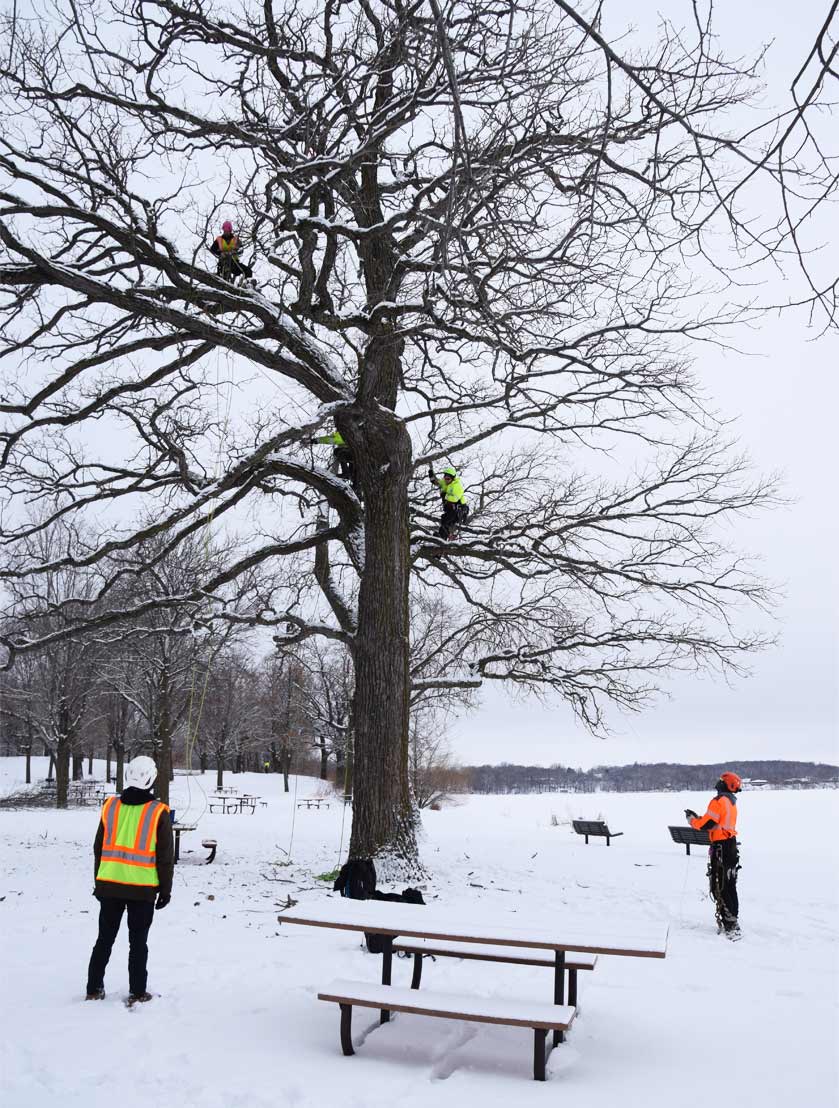
How We Prune at Three Rivers
The first priority for pruning is the removal of hazardous branches. Branches and their connection to the trunk are inspected for defects like cracks and decay that could make them hazardous. After hazardous branches are removed, the focus turns to developing the permanent structure of the tree.
Trees are the strongest and best able to tolerate windstorms when their form consists of one central leader, or trunk, with smaller-diameter horizontal branches evenly spaced along its length.
Corrective structural pruning tries to steer trees toward this form. At the top of the tree, a climber will make sure that the highest point in the whole tree is the top of the central leader. They will prune any competing branches to ensure that this central leader remains dominant.
Next, the main branches of the tree, known as scaffold branches, are developed. The lowest permanent branch is selected for each tree, and all other branches that are lower on the trunk are gradually reduced in size by pruning before being finally removed completely. The goal is for the lowest permanent branch on our shade trees to be at least 10-12 feet above the ground. This allows pedestrians and mowing equipment to pass beneath.
Finally, the tips of branches are pruned away from any nearby buildings, flagpoles or lights.
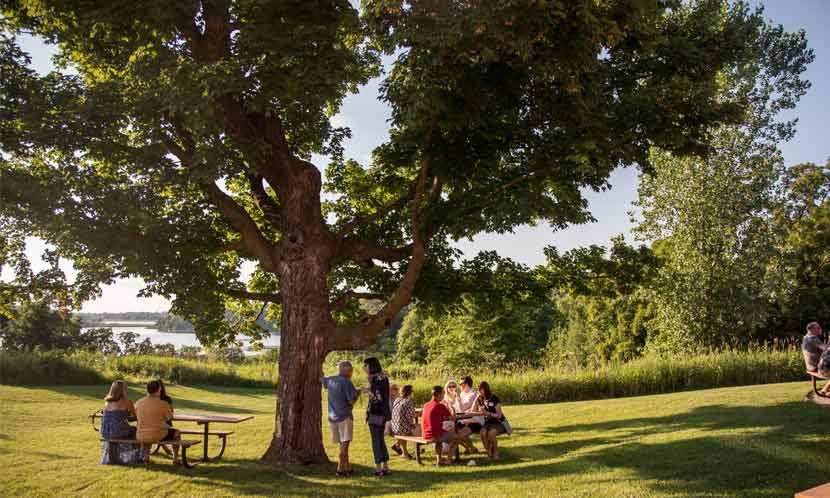
The next time you find yourself sitting beneath the welcome shade of a towering tree in one of our parks, look up and examine the trunk for marks of a history of pruning.
Pruning wounds are eventually covered by new bark, but if you look carefully, you will see the evidence of where branches used to grow. It is evidence of the hard and acrobatic work performed by Three Rivers Forestry staff in their efforts to prune our trees for safety, beauty and longevity.
About the Author

Dan Comerford is the Forestry Supervisor at Three Rivers Park District and has been with Three Rivers since 2012. Born and raised outside of Boston, he received degrees in forest management from the Universities of Massachusetts and Vermont. Dan’s career has taken him from a New England sawmill to the forests of northern Idaho to the tops of trees in Minneapolis. At Three Rivers his focus includes planning reforestation plantings, overseeing the tree pruning program, and managing forest insect and disease outbreaks. Dan lives in Minneapolis with his wife and two daughters.
Related Blog Posts
Why and How Three Rivers Manages Deer
By: John Moriarty
Deer can be fun to see in the parks, but too many of them can be detrimental to the environment and dangerous to drivers.
Prairie Burns: Protecting Precious Habitat with Fire
By: Erin Korsmo
Three Rivers conducts controlled burns at its prairies each spring. Learn what goes into burning a prairie and why fire is so important to preserving this special habitat.
Wetland Management: Drawdowns
By: Steven Hogg
Managing wetland habitat is no easy task, but is necessary in stimulating plant growth, increasing animal and plant diversity, and controlling invasive species. Learn how Three Rivers Park District manages wetlands with drawdowns and explore some of the specific goals in managing this special habitat.
